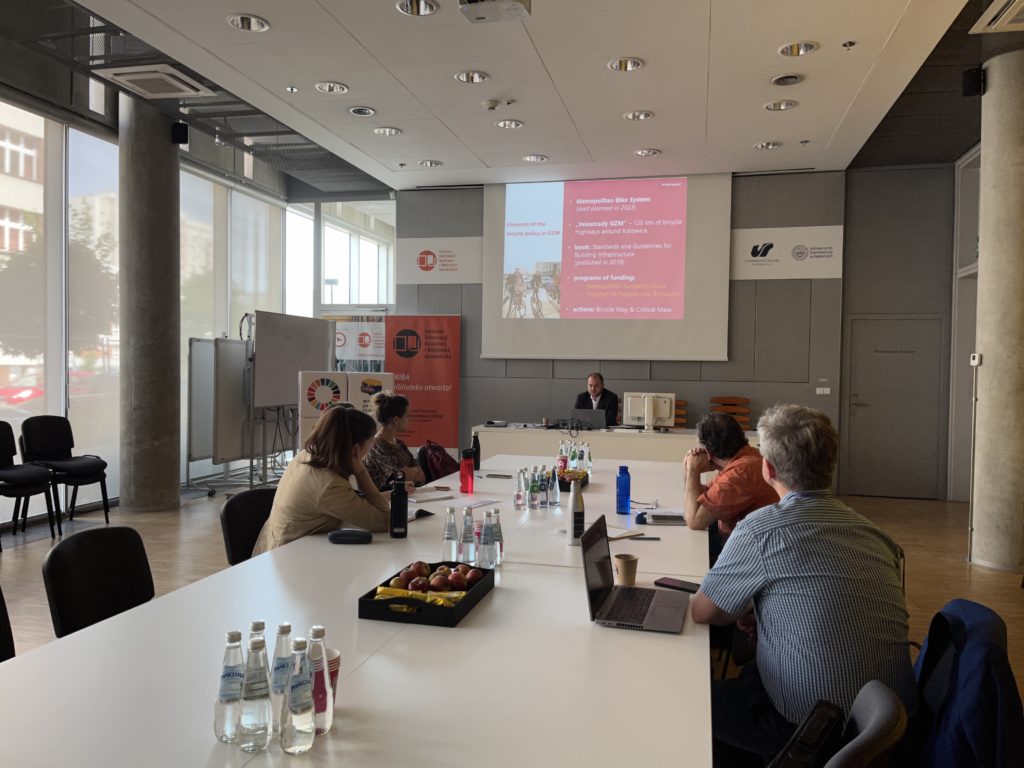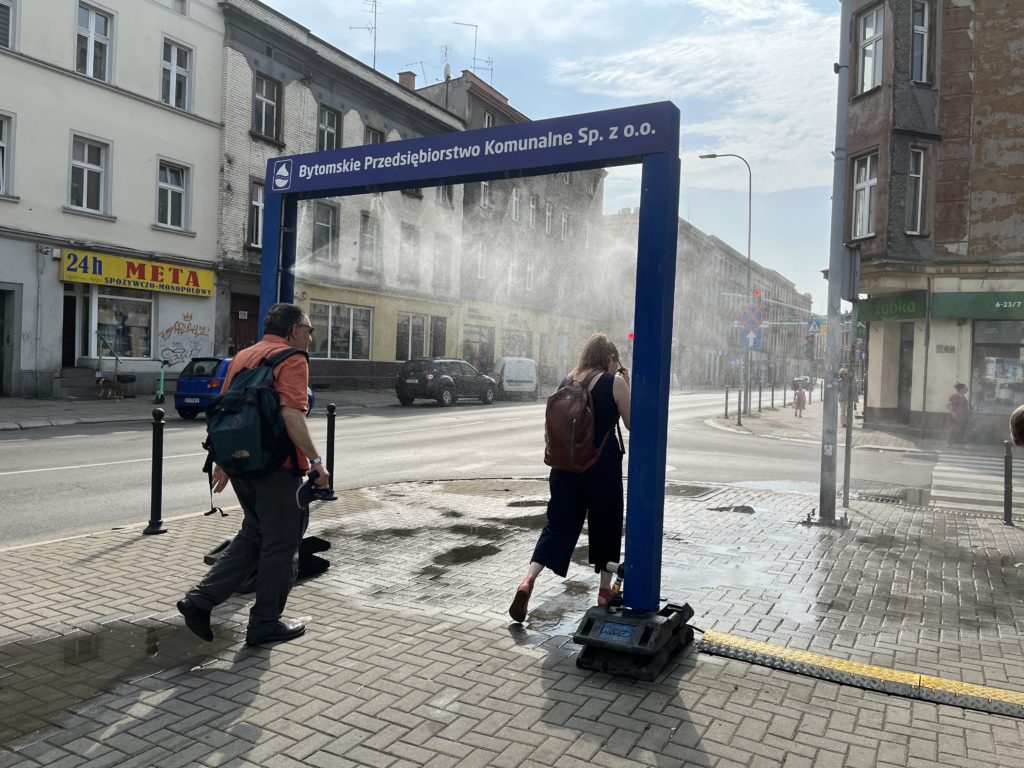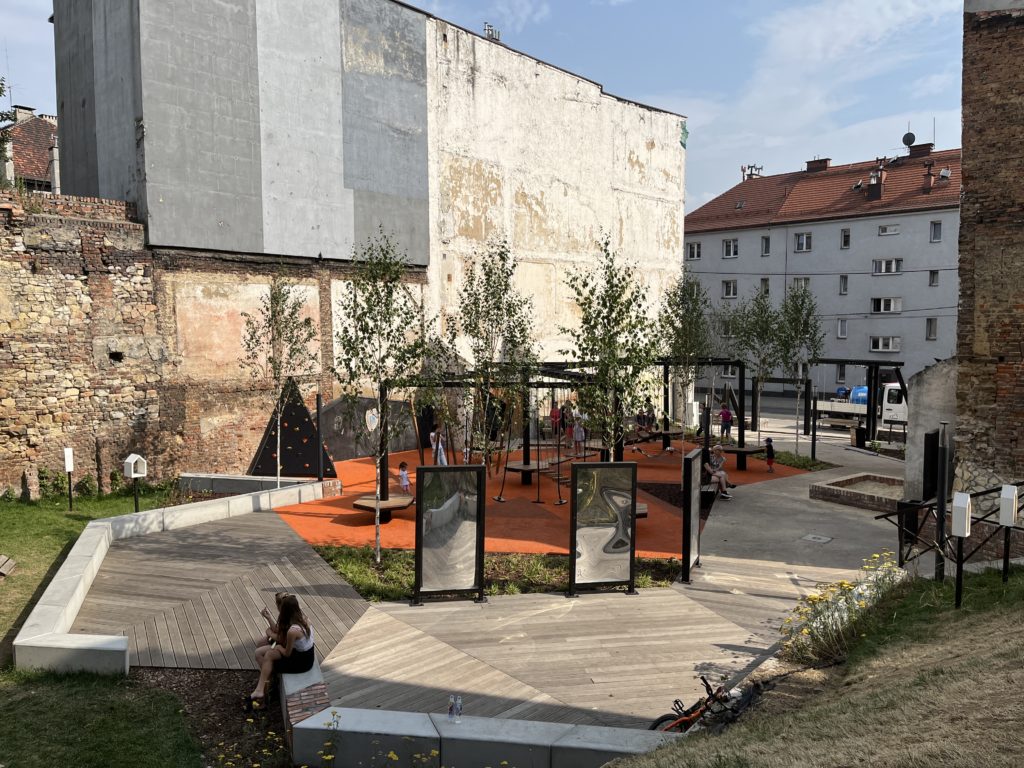29 June – 1 July 2022
Last year, Climate Action KC joined the European Union’s International Urban and Regional Cooperation (IURC) program and was matched with an EU counterpart region as part of a city-to-city exchange. Kansas City’s selected partner was Górnośląsko-Zagłębiowska Metro (GZM), located in the Silesia Voivodeship (think: province) in southern Poland. The GZM consists of 41 cities and communes where 2.3 million residents live. The regional organization there, Metropolia GZM, was established in July 2017 and has focused on development, unifying urban transport, and transforming from a heavy industrial center to an economy based on new technologies.
In April of this year, the IURC sent a delegation from Metropolia GZM to visit the Kansas City area for a week-long study tour focused on sustainable development and regional innovation.
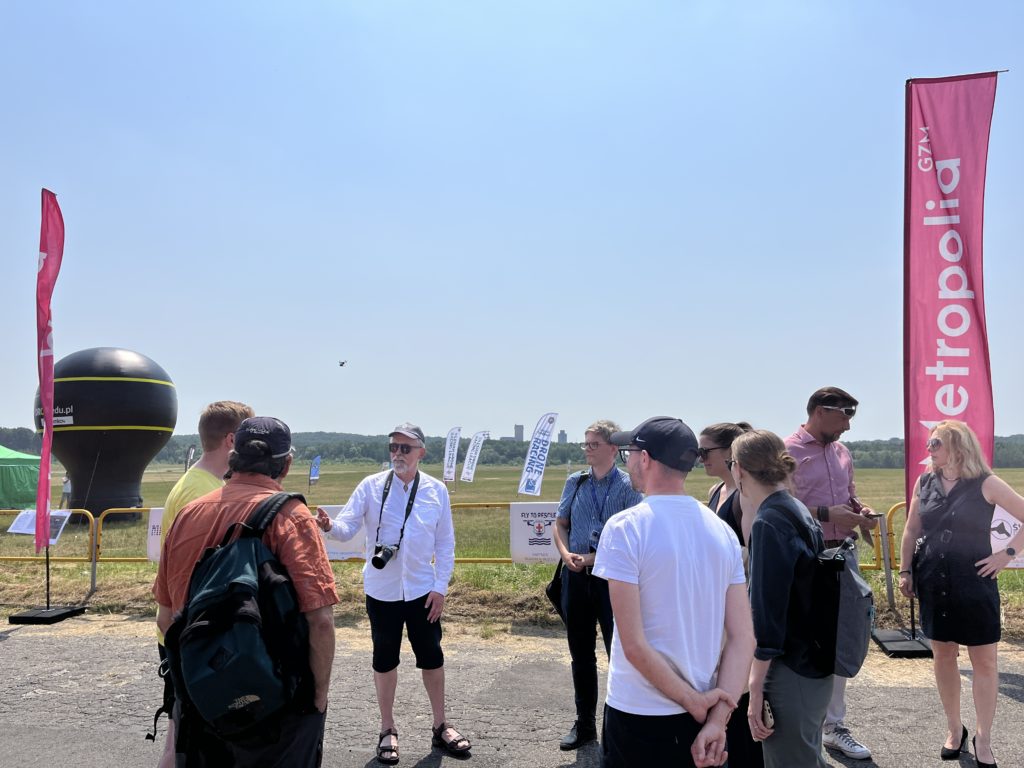
In return, the IURC this summer sent a small delegation from the Kansas City region to Katowice, Poland, the central city in the GZM region.
The delegation included MARC Director of Environmental Program, Tom Jacobs, MARC Principal Planner/Air Quality Program Manager, Karen Clawson, and the Unified Government’s Director of Strategic Communication, Ashley Hand. The delegation took part in a study tour and attended the United Nation’s 11th World Urban Forum.
Upon arriving in the city of Katowice, we learned the city was fairly young by European standards—just shy of 160 years old. It grew quickly around coal, steel and zinc production and turned into an industrial powerhouse. And, unbelievably, the coal mines were right in the middle of the city. Environmental impacts of the heavy industry were abundant, including polluted waterways and poor air quality. In the 1990s, the coal mines began shutting down one by one and around 70% of the region’s coal jobs vanished. Since this time, Katowice has made a significant comeback.
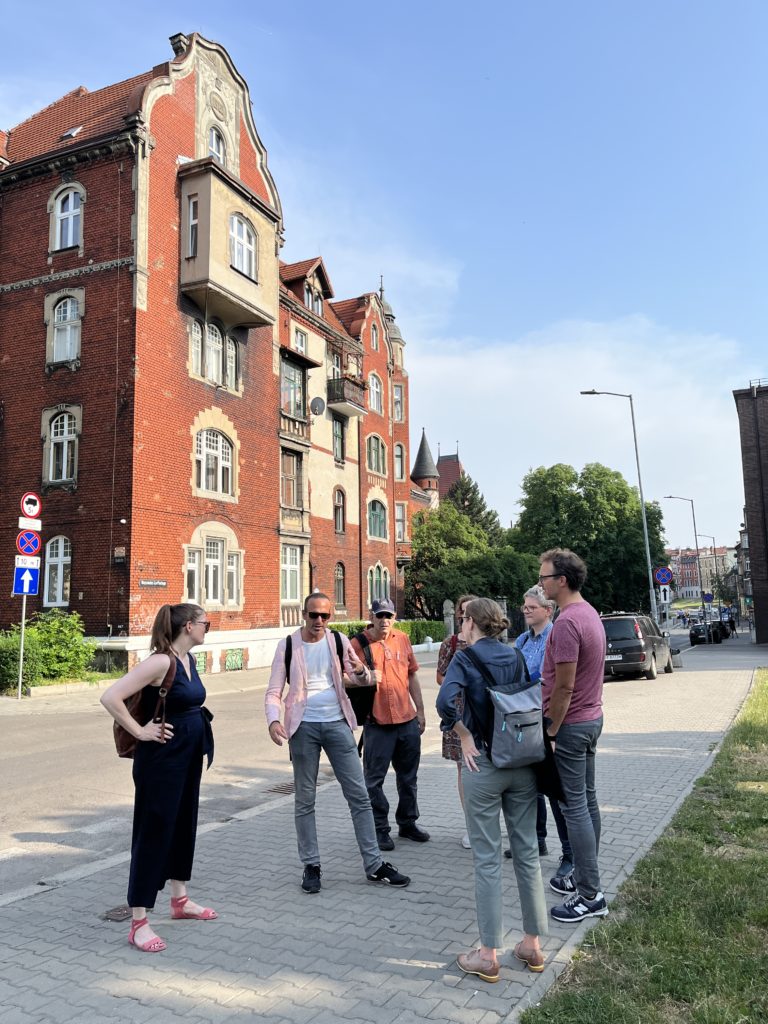
Looking around the central city, you see a lot of beautiful burgher-style houses in neo-this and neo-that fashion. The farther you get from the center, the architectural style becomes more eclectic and modernist, much of which was built in the interwar years in the 1920s and 30s. A strategic re-envisioning of post-industrial Katowice is responsible for these more contemporary developments.
The city is very proud of both its past (you can buy coal jewelry as souvenirs!) and where it’s headed. Katowice considers itself the greenest city in Poland. With 40% of the land area forested, it’s hard to contest that. The city recently went through a rebranding you can see everywhere thanks to the UN’s World Urban Forum taking place during our stay. The city’s new logo is an 8-bit style heart, the bottom half being black and representing coal, and the top half is vibrant stripes of color representing the city’s tech-fueled renaissance. Their slogan is ‘Katowice: dla odmiany’ which means ‘Katowice: for a change.’ And there is a lot of change. Really cool, inspiring change.
Our hosts from Metropolia GZM (Krystian, Ewa, Hubert, Agata, Lukasz and others) took our delegation on a three-day study tour to see the highlights of all of this change. The tour focused on transportation, buildings and energy, technology and innovation. Here are some highlights of each of these areas:
Transportation
Looking around Katowice, transit and bike infrastructure are already well-integrated into the urban fabric. It’s a transportation wonderland. Red trams run along most major thoroughfares and bike lanes run alongside sidewalks on most streets marked by various colors of brick for each mode. The region has over 1000 bikeshare bikes and plans to bring more to the region. Metropolia GZM is at the heart of an effort to create a single monthly pass that will provide a single point of access to bikeshare, trams, train, and bus services. They are also working on an extensive bike highways project called Velostrady GZM that will include 120 km of bikeways through the region. One project that drew our attention, called the Prototyping Academy, invites cities to test out solutions to transportation problems that are developed by cross-functional multi-municipal teams. We visited one such project in the medieval town of Bytom where a traffic calming solution had been temporarily installed to improve a complete street. Unfortunately, politics will likely prevent a more permanent version of that solution from moving forward.

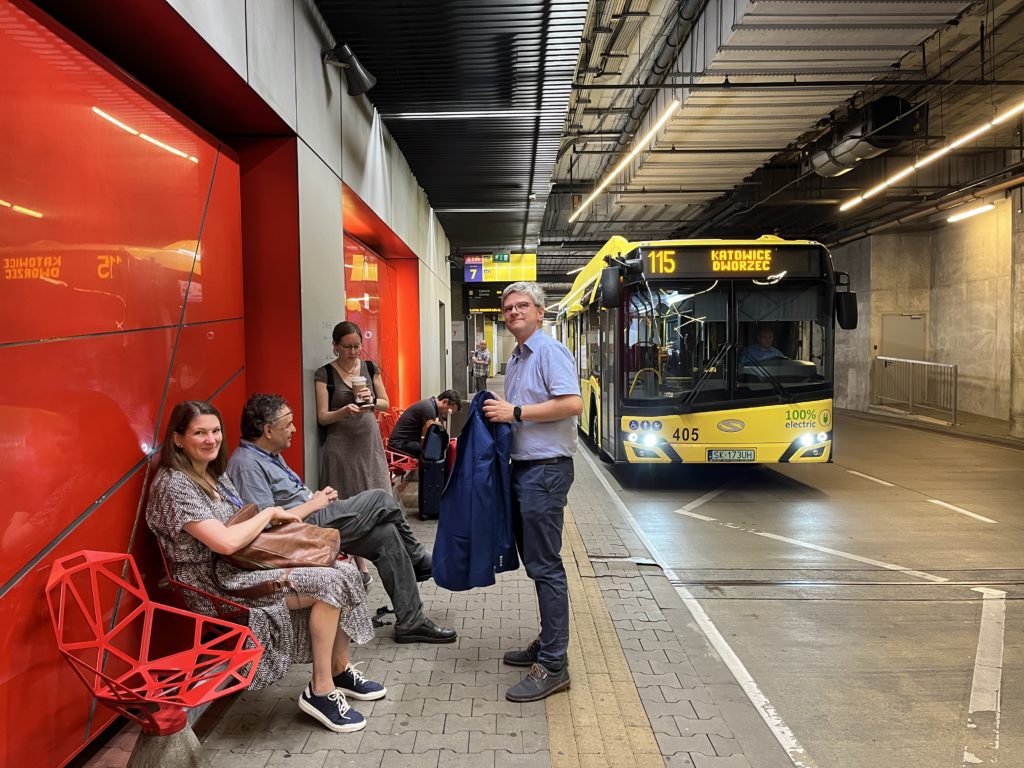


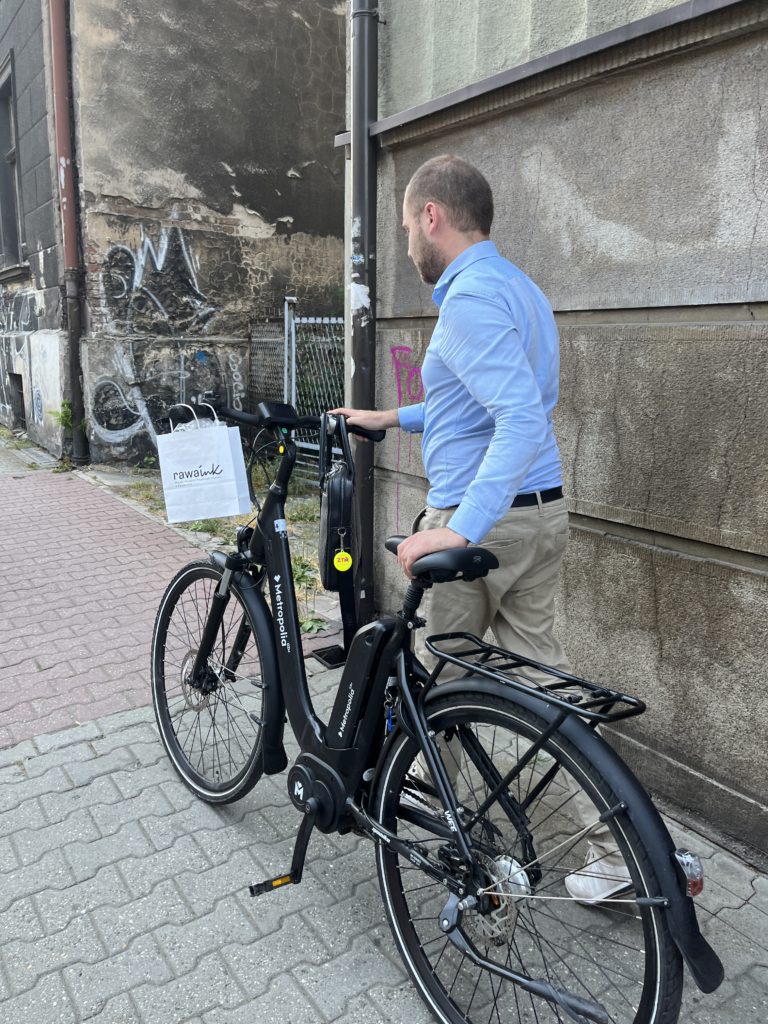
Buildings and energy
Our hosts brought us to several developments employing and experimenting with various green building technologies and mechanical systems. Two developments, in particular, are making use of former industrial sites. GPP Business Park is part of a greater development project planned by GPP Group. The current four buildings on-site, named after Silesian Nobel Prize winners, has trigeneration, gas heat pumps, photovoltaics and BMS, which controls external shutters and rooftop weather stations. The rooftops are green with various types of blooming sedum that are loved on by bees from the rooftop hives. With these technologies, the buildings have 50% lower utility bills and 30% higher comfort, in terms of indoor air quality and purification. One building actually generates more electricity than it uses.
Another exciting development visited was Euro-Centrum. This development includes retrofitted older coal and chemical industrial buildings as well as five new buildings. Each building has slightly different clean technologies that provide different training opportunities as part of their training center and research opportunities for the Energy Efficiency Lab. In contrast to the GPP Business Park, Euro-Centrum utilizes renewable energy and passive heat sources.
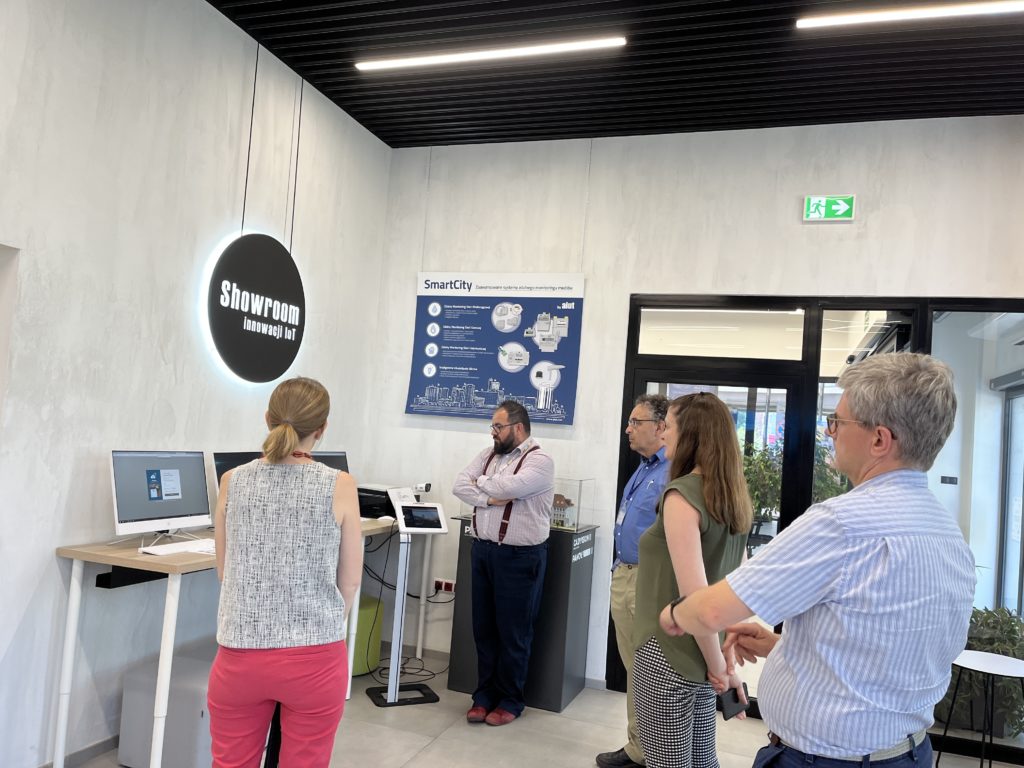
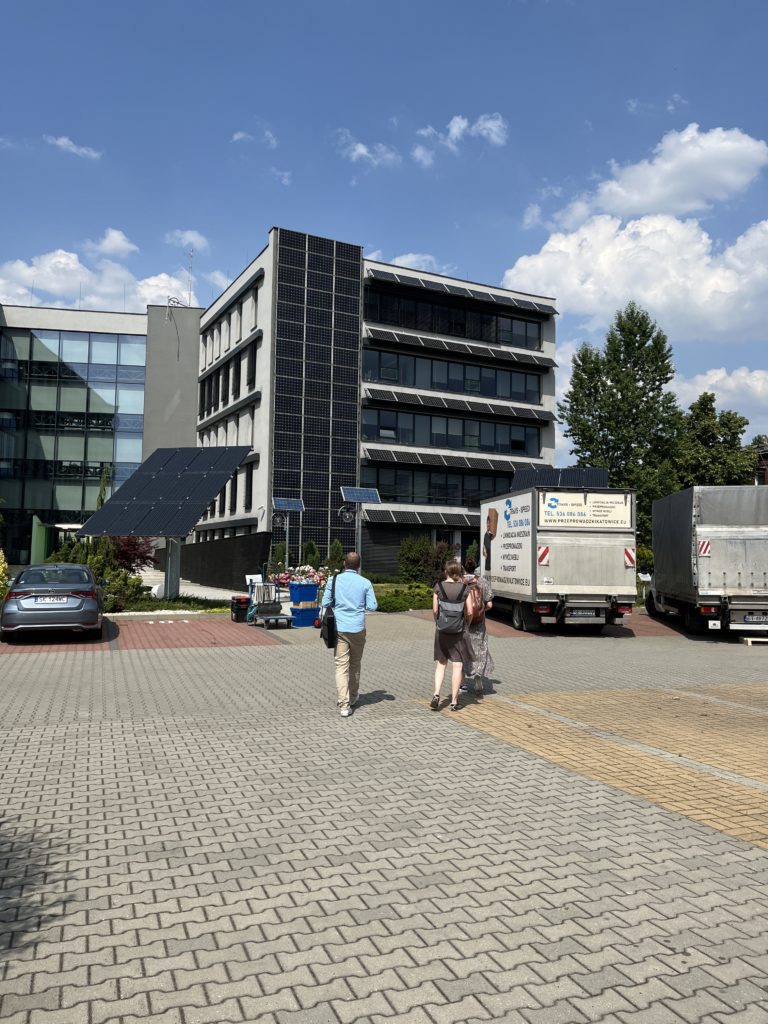

Technology and innovation
At the beginning of the study tour, we participated in the 2022 Droniada event hosted by Metropolia GZM. The event showcases public sector uses of drone technology and included drone racing, an exhibition of drone vendors and a workshop. We learned about the use of drones in emergency response, traffic safety and air quality. Later on, we toured RAWAink, the city of Katowice’s business incubator.
By the end of our study tour, we could see why Metropolia GZM and the city of Katowice are so proud. They are a perfect example of how regional coordination on transportation, innovation and workforce development can help transform an economy in a short period. If you are ever in Poland, instead of Warsaw and Krakow, you should visit Katowice, for a change.
